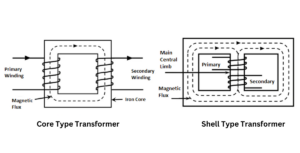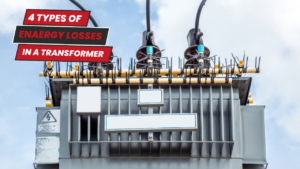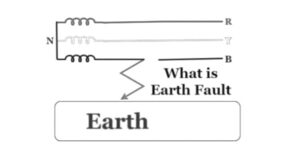The electrifying world of electrical power systems often creates sparks confusion. It is like trying to understand complex math equations while juggling with flaming torches. Whether you are a seasoned electrician or simply seeking to unravel the mystery behind why your toaster repeatedly causes the fuse to blow, we are here to shed some light on KVA and make it easy for you to understand.
kVA is an abbreviation for kilovolt-amps, a unit of measurement used to quantify electrical systems’ apparent power. 1 kVA is equivalent to 1000 volt amps, where a volt represents electrical pressure and amps represent electrical current. The apparent power encompasses both real power (measured in kilowatts, kW) and reactive power (measured in kilovolt-amperes reactive, kVAR) in a system.
Real power represents the actual power that is converted to perform useful work, such as operating electrical devices or powering machinery. Reactive power, on the other hand, indicates the power that does not perform any useful work but is required to support the flow of active power in the circuit.
For a better understanding, examine the coffee analogy.
Having a clear understanding of kVA is essential as it enables you to assess and manage the power requirements of electrical systems accurately. It helps in assessing electrical equipment, including transformers, diesel generators and cables, to ensure they can adequately handle the power demands of a given system.
Calculating KVA Power Rating
While designing an electrical system, it is crucial to compute the KVA power rating. This calculation ensures that the equipment is appropriately sized and capable of handling the electrical current, resulting in a safe and dependable electrical installation and mitigating problems such as overloading or voltage drops. Here is how kVA is measured.
For a single-phase circuit
Let us say you have a voltage of 130 volts and a current of 10 amperes. You can calculate using the formula given below:
*KVA = (Voltage × Current) / 1000
KVA = (130 × 10) / 1000
KVA = 1.3
So, the KVA for this single-phase circuit would be 1.3 KVA.
Three-phase circuit example.
In this case, you have a line-to-line voltage of 480 volts and a current of 50 amperes. Using the following formula, we get:
*KVA = (√3 × Voltage × Current) / 1000
KVA = (√3 × 480 × 50) / 1000
KVA = 41.6
Therefore, the KVA for this three-phase circuit would be approximately 41.6 KVA.
Note: When dealing with three-phase circuits, you need to multiply the voltage by the square root of 3 (√3) in the formula to account for the phase difference between the three phases.
Watts: The Measurement of Actual Power
Watts (W) is a unit of measurement used to quantify actual power in electrical systems, which is a popular term for rating electrical items. Unlike KVA, which represents the total amount of apparent power, watts specifically measure the actual power consumed or transferred to perform useful work. Today, watts are used to measure power in a wide range of applications, from small household appliances to large industrial machinery.
Let’s consider a circuit with a voltage of 150 volts and a current of 5 amps. The calculation for the power in watts would be:
*Watts = Voltage × Current
Watts = 150 × 5
Watts = 750
In this scenario, the power consumption or transfer in the circuit would be 750 watts.
Converting kVA to kW
Converting kilovolt-amperes (kVA) to kilowatts (kW) involves considering the power factor of the electrical system. The power factor represents the efficiency of the electrical system and is a dimensionless value between 0 and 1.
To convert kVA to kW, you need to know the power factor (PF) of the system. Once you have the power factor, you can use the following formula:
*kW = Apparent Power (kVA) x Power Factor (PF)
For example, let’s say you have a system with a 0.9 power factor and 100 kVA. So, you would get the following:
kW = 100 kVA × 0.9
kW = 90
So, the equivalent power in kilowatts (kW) would be 90 kW.
It’s important to note that the power factor plays a significant role in the conversion because it represents the portion of the apparent power (kVA) that is effectively converted to real power (kW). A lower power factor indicates less efficient power usage, while a higher power factor indicates more efficient power usage.
Understanding Power Factor: Real Power and Apparent Power
Power factor is a measure of electrical efficiency and quality of power consumption in electrical systems. It is the ratio (between 0 and 1) of real power (in watts) to apparent power (in volt-amps or VA) in a circuit. Real power represents actual power that is consumed, and apparent power represents the total amount of power in a system. However, when current and voltage aligns, the real power becomes equal to the apparent power.
To compute the power factor, use the following formula.
*Power Factor = Real Power / Apparent Power
A power factor of 1 (or unity) indicates maximum efficiency and reduced energy wastage but does not necessarily mean that all power is used for useful work. A power factor of 0 indicates purely reactive power without any real power consumption. For single-phase generators, the power factor is normally one. Therefore, kVA equals kW. The power factor for three-phase generators is typically 0.8.
Conclusion
Through a deep understanding of KVA, watts, power factor and their interconnectedness, you can confidently undertake the design, maintenance and troubleshooting of transformers. Specifically in the context of transformers, the KVA rating plays a critical role. It indicates the capacity of the transformers to handle the electrical load efficiently. Therefore, the KVA rating becomes a crucial factor in selecting the appropriate transformer size for a given application.
By harnessing the potential of KVA, you can enhance the performance of your transformer and ensure optimal functionality and reliability. It enables the creation of more efficient and sustainable transformer systems, resulting in cost savings and reduced environmental impact.
If you are seeking to optimize your transformer setups, Grant Transformer is here to provide you with the expertise and guidance you need. Contact us today to take the first step toward building a smarter and more efficient transformer system tailored to your specific requirements.
Image Source[1]: https://www.natureof3laws.co.in/



